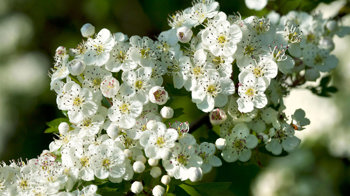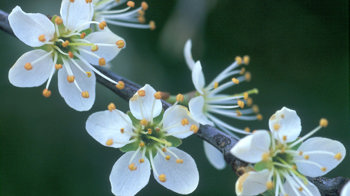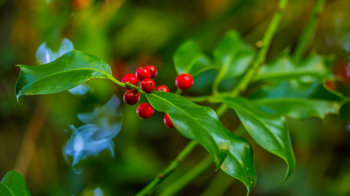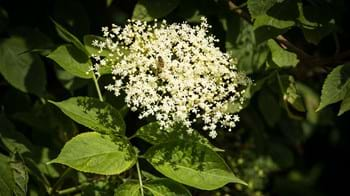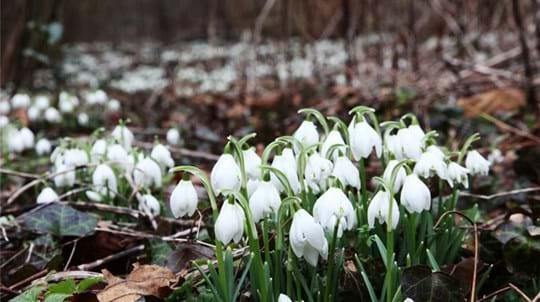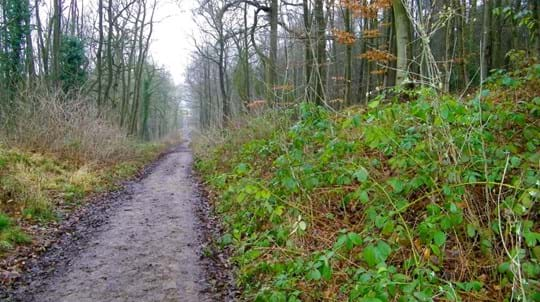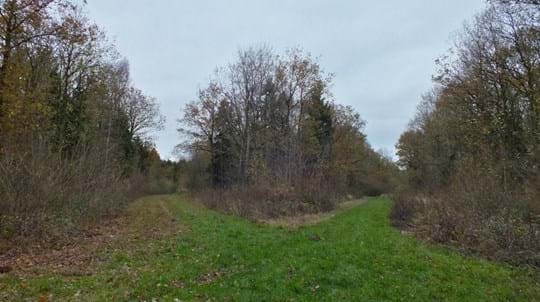
Everdon Stubbs
Daventry

Woodland Trust wood
28.91 ha (71.44 acres)
SP606566
Explorer 223
OS Landranger 152
Everdon Stubbs is an ancient woodland with a mix of English and sessile oak, lowland birch, sweet chestnut and sycamore. Bluebells and rare wild daffodils provide colour in spring. A prehistoric Saxon burial site remains on the site's northern boundary along with a host of other archaeological features found across the woodland.
Features
- Parking at site
- Public access
- Autumn colour
- Spring flowers
- Broadleaved woodland
How to get to Everdon Stubbs
Everdon Stubbs is a 70-acre (28-hectare) hill top woodland between the villages of Everdon and Farthingstone, 6 miles south of Daventry.
The Everdon to Farthingstone road divides the wood in two. If travelling from Everdon (to the north), the car park can be accessed on the left hand side before the cross roads to The Stowes.
The nearest train stations are at Long Buckby, 9 miles to the north, and Northampton, 13 miles to the east.
The closest bus stop is 1 mile away (around a 20 minute walk) in Everdon village, although there is limited service. For more information on bus services visit www.traveline.info.
Facilities and access
There are a number of entry points to Everdon Stubbs from the roads and public footpaths that abut the site.
Entrances are made up of squeeze gaps for the most part, with a stile and kissing gate on the public right of way route.
Paths are unsurfaced so can become muddy in wet weather.
A small off road car park has space for 6-8 vehicles. From here you can access both sides of the wood on foot through entrances with bollards/squeeze gaps in place.
Further informal roadside parking can also be found along the southern boundary of the wood.
There are no public toilets in the vicinity.
Wildlife and habitats
Animals
All three species of British woodpeckers make Everdon Stubbs their home, including the rare lesser spotted, best looked for in early spring while tree branches are still bare of leaves. Also look out for signs of badgers, such as the well-trodden trails they make through the undergrowth.
Trees, plants and fungi
Everdon Stubbs is important for its mix of broadleaf tree species found in few other places in the East Midlands. A number of old sweet chestnut, rowan, field maple and wild cherry trees are found in the wood, as well as a small stand of hornbeam which is unusual for the area.
The wood is also well known for its spectacular display of bluebells in spring. Other plants of note include locally rare wild raspberry, broom, gorse and moschatel, as well as wood and bitter vetch, orpine, heath bedstraw and yellow archangel. Everdon Stubbs also boasts one of the largest populations of wild daffodil in the county.
Habitats
Everdon Stubbs is one of the few remaining ancient woodlands in Northamptonshire and a Site of Special Scientific Interest. The whole site is also covered by a Tree Preservation Order (TPO). It has been traditionally managed for coppice - a practice continued today to provide the right conditions for a variety of wildlife to thrive.

A lasting legacy
This wood is just one of many to have been protected by gifts in wills, securing it for generations to come. Your legacy gift could also make a real difference to woods, trees and wildlife.
Learn what your gift could meanAbout Everdon Stubbs
History
The wood dates back to medieval times. Part of it has developed on old farmland and the remains of ridge and furrow agriculture can still be glimpsed.
The word 'Stubbs' probably refers to the management of the wood as coppice, whereby trees are cut down to a stump (synonymous with stubb) to encourage the tree to produce many new stems. Look out for the large old coppice stools still present in the wood.
It's also thought that 'Everdon' is so named for the Old English meaning 'boar hill', perhaps referencing the wild boar hunts that would have taken place here in the distant past.
Archaeology
The open bracken glade on the northern boundary of the wood is the site of a prehistoric Saxon burial ground.
An ancient ditch and bank, which forms part of the parish boundary between Everdon and Farthingstone and was once an important track way, divides the wood into parts known as Everdon Wood (to the west) and Everdon Stubbs (to the east). Other earthworks in the wood include two internal woodbanks running roughly north-south, and a hollow way bounded by banks running east-west close to the northern boundary. This way is marked as Weedon Roade on a 1758 map.
Things to do at Everdon Stubbs
Walks
Explore Everdon Stubbs' sensory trail: a series of 12 'sense' posts scattered through the trees. Along the way you'll be invited to use different senses to experience the wood, and learn to identify different tree species by their fruits, seeds and the shape of their leaves.
Stunning views of the surrounding countryside can also be seen from the edges of the wood, particularly from the viewpoint off the public footpath that runs along the northern boundary.






























